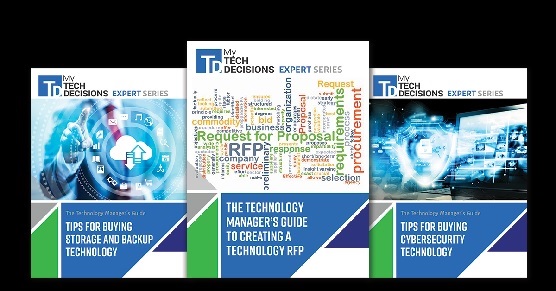When it comes time to set your IT budget and get it approved by your organization’s leadership, there are several things to keep in mind as you navigate the sea of service providers, vendors, manufacturers, and dealers to determine how much your organization will pay for critical products and services.
This involves conversation with leadership about the IT department’s budget and how much they’re willing to invest in technologies, conducting thorough market research and comparing the pros and cons of solutions and viewing every investment through the lens of security.
Following these steps should help improve efficiency in the budgeting process as you bring on new technologies and services to your organization – regardless of how large or small it is.
Getting buy-in from leadership
To determine how much you’re willing to spend on a product or IT service, IT managers first need to have conversations with their leadership and sell them on a particular investment.
“There’s a lot more work as an IT manager or CIO on selling your leadership on why these investments matter,” says Vince Crisler, an IT consultant and CEO and founder of cybersecurity firm Dark Cubed.
It’s important to have transparency when you’re having those conversations with leadership so everyone knows how much these services are expecting to cost. That’s especially true when talking about core IT systems that every successful business requires, like internet, communications, operating systems, endpoints, and security.
According to Crisler, IT managers need to determine how important a particular product or service is to the company and how much leadership is willing to invest to improve the organization’s IT systems.
“As you’re thinking about core functionality, you don’t want sticker shock to come in and you need to be able to really know how you’re affecting the profitability of the business and the efficiency of the business with your investments in IT,” Crisler says.
According to Crisler, determining pricing really comes down to how well you articulate your message to leadership to get key stakeholders to support your technology decisions with a workable budget.
“What distinguishes a good IT manager from somebody who can’t get things done is they can articulate things in a way that company leadership can understand,” Crisler says. “As an IT manager, you’re never really just kind of going to the market, getting pricing and then going to your leadership with a quote.”
Rather, this process should start with a discussion with leadership about what technologies you think the organization needs and what you currently pay for similar services. The budget should be based on your market research, so you’re armed with that knowledge when it’s time to talk with vendors.
Going to market
Once IT professionals are armed with that information from company leadership, next is time to survey the market and collect a range of pricing data from which to compare vendors and their offerings.
For more commoditized services like Zoom, Microsoft Teams, Webex and other unified communications tools that are growing in popularity, forming a budget plan is a lot more straightforward since costs are generally predetermined.
Research and surveying the market should give you the knowledge of what you will expect to pay, says Crisler. That process should ultimately give you a range of prices. Once armed with that price point, then you can start asking those providers about specific plans and prices and get into the finer details.
“Then you can start to interview folks and figure out what you can get for that price point,” Crisler says.
This goes back to those original discussions with leadership about what you expect the product or services could cost. IT managers should pad that expected budget for products and services to account for any unforeseen costs, and that could also result in good news for the company if the price comes in lower than expected.
“If you think it’s going to be $25 a line and it comes in at $15 a line, you’re the hero,” Crisler says.
Read Next: How IT Pros Can Earn Budget from Key Stakeholders
This process will vary based on the type of product or service in question. For example, finding a managed service provider or technology integrator will be a much more involved process and should consist of meeting with a handful of service providers.
“They should go out and collect some pricing data as they can,” says Joshua Liberman, president of New Mexico-based IT provider Net Sciences.
For many service providers and other technology vendors, this can be a lengthy process before a price is even determined since many require a site visit, evaluation, and several rounds of interviews to determine the best course of action and price plan.
Technology managers should have those initial discussions with several technology providers and form a list of at least three in varying price ranges: budget-friendly, on the higher end and somewhere in the middle.
“They need to kind of think through why there is a difference,” Liberman says.
Budget-friendly options that do just enough for the company might look good on paper and impress leadership with cost savings, but they’re generally not as robust as enterprise-grade solutions.
Essentially, you will get what you pay for.
Reevaluate prices routinely
In the tech industry, mergers, acquisitions, divestitures, buyouts, and private equity are constantly disrupting pricing structure and the IT ecosystem.
“They have profound effects on everything from the price structure to how stable the product is to how well it’s developed in the future,” Liberman says.
It can be hard to stay on top of the tech industry landscape given how quickly it can change, but a good IT manager should always reevaluate the market and look for cost savings where they can to help create some efficiencies in other areas.
“For the savvy IT manager, it’s not just about cutting your budget,” Crisler says. “It’s about expanding the services you can offer to your company.”
For example, if you can save 15% of a few products and use those savings to ring a new functionality to the company that drives more productivity, that creates more value for your organization.
“At the end of the day, your job is to help the productivity of the company and to be an asset to help people do their jobs,” Crisler says. “Your job is to make the company do as well as it possibly can given the resources you have to spend.”
Expect to pay a premium for security
The threat of a cyberattack on your organization grows each day as cybercriminals and their tools become more sophisticated, so security should be baked into every product or service you bring to the organization.
As such, you should expect to pay a premium for products and services that value security.
“Every product and service you engage with has to be viewed first through the lens of security because there’s so much potential risk, especially people who are diving into large IoT – the internet of threats,” Liberman says.
IT managers should analyze everything though a lens of security. When doing that market research, only products and services that make it through that security filter should be considered – regardless of price.
One you have those three offerings that make it through that security filter, now you can compare their costs and the pros and cons of each solution as it relates to your organization.
Pitching high-cost secure solutions to leadership could be a challenge since there is no short-term ROI, Liberman says.
“It’s a pure cost to implement secure procedures, tools and processes. It costs money,” Liberman says. “On the other hand, it prevents you from losing your business.”
More secure businesses are typically more stable and more profitable, but an investment in security won’t reap immediate benefits like it would for a faster internet speed, better endpoint devices or unified communications software.
“Security of the systems you purchase is starting to become integrated into the buying decision,” Crisler says. “Smart and savvy IT managers will realize that and stat to make sure they’re considering that when pricing out products and services.”
If you enjoyed this article and want to receive more valuable industry content like this, click here to sign up for our digital newsletters!










Leave a Reply